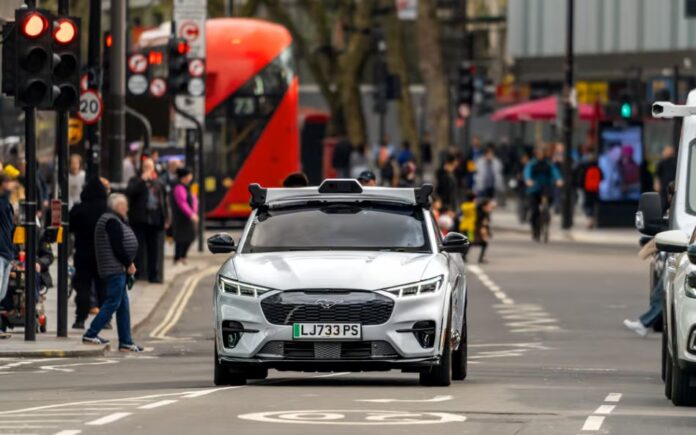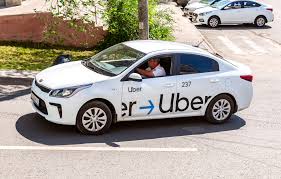When an Uber driver is involved in an accident, determining responsibility can be complex. Liability often depends on factors like whether the driver was on the clock, following company policies, or acting outside their duties. Uber may be responsible for accidents caused by their drivers during active trips, but individual circumstances heavily influence this determination.
The company’s classification of drivers as independent contractors adds layers to legal responsibility. Insurance coverage and state laws also play crucial roles in deciding who is held accountable. Understanding these nuances is essential for anyone involved in or affected by an Uber accident.
Exploring how liability is assigned, the role of Uber’s insurance, and what that means for drivers and passengers after a crash. It aims to clarify when Uber can be held responsible and when liability falls elsewhere.
Understanding Uber’s Role in Rideshare Accidents
Uber’s involvement in accidents depends on factors like driver status, timing of the ride, and applicable insurance coverage. Liability can vary based on whether the driver is waiting for a ride request or actively transporting a passenger.
How Uber Operates
Uber connects passengers with independent drivers via a mobile app. Drivers use their personal vehicles and are not employees but contractors.
The company’s control over drivers is limited, primarily focused on app usage, ratings, and compliance with certain standards. Uber requires background checks but has no direct control over daily driver behavior.
Liability often hinges on the driver’s status: whether offline, en route to pick up a passenger, or during an active ride. This status influences who may be responsible for accidents under state laws and Uber’s policies.
Types of Uber Accidents
Common Uber accidents include:
• Collisions while carrying passengers
• Crashes en route to pick up passengers
• Incidents during driver offline time but related to Uber activity
Most liability issues arise during the active ride or driver’s trip to pick up passengers.
Since drivers are independent contractors, some accidents may be treated like traditional car accidents involving private vehicles. Others fall under rideshare-specific rules depending on the driver’s use of the app.
Insurance Coverage Provided by Uber
Uber provides three layers of insurance depending on driver status:
| Status | Coverage Limit (Liability) | Additional Coverage |
| Offline | None from Uber | Private auto insurance applies |
| En route to pick up | $50,000 per person, $100,000 per accident | $25,000 property damage |
| During trip with passenger | $1 million liability | Uninsured motorist, collision, and comprehensive coverage elective |
Uber’s insurance often fills gaps left by driver’s personal policies during trips. However, coverage varies by state, and limits may not fully cover all accident damages.
Legal Liability in Uber Accidents
Liability in Uber-related accidents depends on factors like who caused the crash and whether the driver was on a trip at the time. The distinction between driver fault and company responsibility varies by case and jurisdiction. Insurance coverage and employment status play critical roles in assigning legal responsibility.
Determining Fault in Rideshare Crashes
Fault determination relies primarily on traffic laws and evidence such as police reports, witness statements, and surveillance. If the Uber driver violate traffic rules, such as running a red light or speeding, they are usually at fault. Other drivers, pedestrians, or passengers may also share fault based on their actions.
In some cases, the state’s comparative negligence laws affect fault percentage. For example, if a passenger distracts the driver causing the accident, fault could be split. Fault also depends on whether the Uber driver was logged in and actively transporting a passenger.
When Uber May Be Held Responsible
Uber’s liability generally arises when its driver is logged into the app and engaged in a ride or actively seeking one. During these periods, Uber carries contingent insurance coverage which can be used to pay claims.
If the accident occurs while the driver is off duty or not using the app, Uber typically is not liable. However, Uber may be responsible if it failed to properly screen or supervise the driver, especially if the driver has a history of reckless behavior. Legal claims against Uber might also arise under theories like negligent hiring or failing to maintain a safe platform.
Driver Versus Company Responsibility
Uber drivers are usually considered independent contractors, not employees. This status limits Uber’s direct liability for drivers’ actions while off the clock or not using the app.
When drivers are active on the platform, liability may shift toward Uber’s insurance policies, which often provide up to $1 million coverage. Drivers are typically required to carry personal insurance, but that coverage often excludes accidents while carrying passengers.
Legal responsibility is complex and may involve both the driver’s personal insurance and Uber’s commercial policies. Each party’s role in the incident determines the degree of responsibility.
Uber’s Policies and Terms Regarding Accidents
Uber sets clear standards for drivers and establishes precise rules for ride acceptance and app usage. These policies aim to reduce risks and clarify responsibilities in case of accidents. Understanding these rules can help determine Uber’s role following an incident.
Driver Requirements and Screening
Uber requires all drivers to pass background checks that review criminal records and driving history. These checks are done before drivers join the platform and periodically thereafter.
Drivers must hold valid licenses, maintain up-to-date vehicle registration, and carry required insurance. Uber also enforces vehicle safety inspections to ensure cars meet basic operational standards.
If a driver is involved in an accident, their compliance with these requirements can influence how Uber addresses claims. Non-compliance may lead to suspension or removal from the platform.
Ride Acceptance and App Usage Rules
Drivers must accept rides exclusively through the Uber app, following defined procedures for trip start and end. This system records trip data, which Uber relies on to verify ride details in case of accidents.
Drivers are prohibited from using phones for non-app activities while driving. Failure to comply with these rules may be considered negligence or a breach of Uber’s terms.
Uber discourages drivers from picking up passengers outside of the app’s system, as this bypasses tracking and insurance coverage provided by Uber during active trips.
Insurance Claims After an Uber Accident
Insurance claims after an Uber accident can be complicated due to the involvement of multiple insurance policies. Determining which coverage applies depends on factors like whether the Uber driver was available for a ride or actively transporting passengers.
Third-Party Liability Coverage
Uber maintains a liability insurance policy that covers damages when a driver causes an accident. This coverage applies when the driver is en route to pick up a passenger or has an active ride request.
The policy typically provides:
• Up to $1 million in third-party liability coverage
• Coverage for bodily injury and property damage to others
• Coverage that kicks in after the driver’s personal insurance is exhausted
If the driver is offline, only their personal insurance generally applies. Claimants must provide evidence of the driver’s Uber status at the accident time to access Uber’s insurance.
Passenger Injury Claims
Passengers injured in an Uber vehicle may claim injury protection under Uber’s insurance regardless of fault. Uber’s policy includes:
• $1 million per accident for passenger injuries
• Medical expense coverage and compensation for lost wages
• Coverage available even if the driver is at fault or partially responsible
Passengers should document injuries thoroughly and report the accident promptly to Uber and their insurance company. Filing a claim early helps ensure proper handling under Uber’s specific insurance guidelines.
Challenges in Holding Uber Accountable
Determining Uber’s responsibility in accidents involves complex legal and operational barriers. Two major difficulties arise from the classification of drivers and the variation in laws across states and countries.
Independent Contractor Status
Uber classifies its drivers as independent contractors rather than employees. This status limits Uber’s direct liability in accidents involving their drivers. The company argues it does not control drivers’ schedules or daily operations, reducing its responsibility for their actions.
Courts often examine this classification when determining Uber’s accountability. If a driver is an independent contractor, Uber’s duty to monitor or train is less clear. As a result, victims may face challenges suing Uber directly.
This arrangement also affects insurance claims. Typically, personal auto insurance covers independent contractors until they activate the Uber app for a ride. The transition between personal and commercial coverage can create gaps in protection after accidents.
Jurisdictional Variations in Laws
Laws governing ride-sharing liability differ widely by region. Some states impose strict liability on Uber for accidents during active rides. Others offer more protection to the company by emphasizing driver independence.
These variations complicate accident claims. Plaintiffs must navigate differing requirements for proving negligence or establishing Uber’s role. Local regulations also affect the liability insurance mandates Uber must meet.
For example, California’s AB5 law aims to reclassify gig workers as employees, potentially increasing Uber’s liability. In contrast, other regions have passed laws that uphold the independent contractor model, shielding Uber from some legal exposure.
This patchwork of laws means accountability depends heavily on where the accident occurs, making outcomes unpredictable for victims.
High-Profile Uber Accident Cases
Uber has faced several serious legal challenges stemming from accidents involving its drivers. These cases reveal how courts and companies navigate liability, insurance, and safety responsibilities linked to rideshare incidents.
Notable Lawsuits Involving Uber
One high-profile case occurred in 2018, when an Uber self-driving car struck and killed a pedestrian in Arizona. This was the first fatality involving autonomous Uber technology, sparking litigation around product liability and the limits of driverless safety.
Another notable lawsuit involved a passenger injured during a crash caused by an Uber driver in Texas. The passenger sued Uber, claiming it failed to properly vet its drivers and maintain safe vehicle standards.
In several instances, families of pedestrians or drivers killed or hurt in Uber-related accidents sued Uber for negligence or wrongful death, focusing on Uber’s role as more than just a platform.
Precedents Set by These Cases
The 2018 autonomous vehicle fatality raised questions about how liability is assigned when software and human control overlap. Courts have since examined whether Uber should be treated as a traditional car service or a tech company with different responsibilities.
Cases involving injuries under human-driven Uber trips helped clarify Uber’s role in providing insurance coverage during rides. Courts often found Uber liable once the driver was logged into the app and available to accept rides.
Legal decisions also stressed the importance of background checks and vehicle safety standards in reducing accidents. These precedents push Uber to strengthen driver screening and incident response protocols to limit future liability.
Future of Uber Accident Liability
Uber’s liability landscape will be shaped by evolving laws and the rise of new technology. Key areas include government regulations and the integration of autonomous vehicles, both of which could redefine responsibility in accidents.
Emerging Regulations
Governments are increasing oversight of rideshare companies like Uber. New laws focus on clearer definitions of when Uber is liable for driver actions versus when drivers are considered independent contractors.
Some states are introducing mandatory insurance requirements that cover both drivers and passengers during trips. This includes minimum coverage amounts and protocols to verify insurance before a ride begins.
Regulators also aim to improve data sharing between Uber and authorities after accidents. This ensures quicker investigations and more precise liability determinations.
Impact of Autonomous Vehicles
Uber’s investment in self-driving technology presents a shift in accident liability. When a vehicle operates autonomously, traditional driver fault is replaced by scrutiny on the software and hardware.
Liability could move toward manufacturers, software developers, or Uber as the service provider, depending on the cause of malfunction. This complicates insurance claims and legal responsibility.
Insurance policies will need to adapt to cover these scenarios, addressing who is responsible for machine errors. It challenges current legal frameworks designed for human drivers and raises questions about accountability.
Uber’s responsibility for accidents depends on factors like driver status and insurance coverage. Accidents may involve the driver, other vehicles, or pedestrians. Types include driver negligence, distracted driving, or rideshare-related incidents. Liability varies between personal, commercial, and Uber’s insurance policies, making case specifics crucial for determining responsibility.













